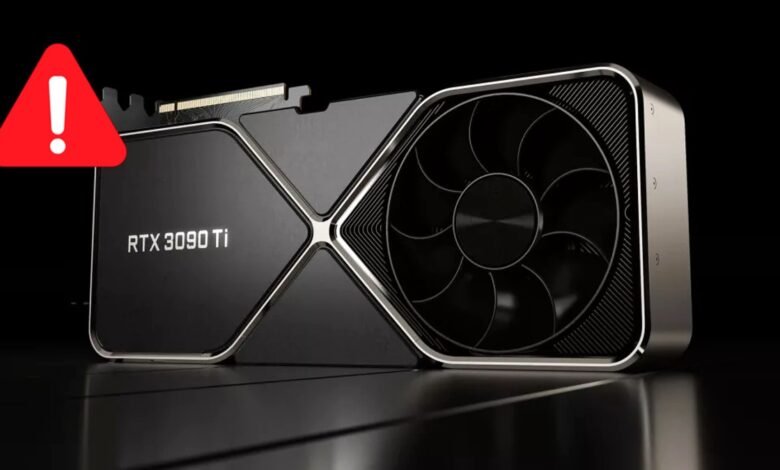Is Your GPU is Dying? 8 Warning Signs You Should Be Aware Of

The GPU is the core component that handles tasks that require a lot of graphics power. Even though it’s very strong, it wears out and starts to fail over time. Before it fails for good, it usually shows signs that it’s about to break and needs to be fixed or replaced right away. This guide goes over these signs.
EXPLORE THE CONTENTS
Before we dive deeper:
While discussing the symptoms of a failing GPU, it’s important to keep in mind that some of them could also be the result of software problems with your computer, issues with other components like RAM and SSD, poor GPU installation, using outdated or corrupted drivers, or other factors.
Before going any further, make sure the GPU is properly connected, that its drivers are up-to-date, and that you haven’t boosted it or changed any software settings in the wrong way. Take out the specialized GPU and run your PC on an integrated or different GPU to see if the problems still happen. If it does, it might not be the GPU itself but rather another part or setting in the program.
If the following symptoms don’t go away after you fix the other problems, it could mean that there is a problem with your GPU. But as you look at these 8 signs, keep ruling out other possible reasons as you see them.
Here are 8 signs that your GPU is dying.
1. Artifacts and Visual Glitches
Artifacts are abnormal visual elements that appear on your screen, such as random pixels, distorted textures, or unusual colors. These glitches can occur during gaming, video playback, or any graphics-intensive tasks. Memory errors, excessive heat, or a failing GPU chip are common causes of them. Persistent artifacts indicate underlying hardware issues that require immediate attention.
2. Driver Crashes
A graphics driver acts as a bridge between your GPU and operating system, facilitating smooth performance and rendering. Frequent crashes of your graphics driver, resulting in system freezes, black screens, or error messages like “Display driver stopped responding,” are signs of potential GPU problems. Driver conflicts, outdated software, or hardware issues with the GPU itself can cause these crashes.
3. Overheating

GPUs generate significant heat during operation, and proper cooling is essential to maintaining optimal performance. Overheating can occur due to dust accumulation, inadequate airflow, or a malfunctioning cooling system. Symptoms of overheating include sudden performance drops, system instability, and in severe cases, thermal shutdowns to prevent damage. Regularly monitoring and managing GPU temperatures is crucial to preventing overheating-related issues.
4. Performance Drops
A noticeable decline in gaming frame rates, slower rendering speeds, or increased stuttering despite unchanged settings can indicate a failing GPU. Performance drops may occur due to aging hardware, insufficient power supply, or thermal throttling caused by overheating. Benchmarking your GPU’s performance over time can help identify gradual declines and potential issues early on.
5. Screen Freezes or Lockups
When your screen freezes, becomes unresponsive, or your entire system locks up during graphics-intensive tasks, it suggests a GPU-related problem. Driver conflicts, hardware issues, or insufficient VRAM (Video Random Access Memory) for handling complex graphics can all be the cause of screen freezes. Troubleshooting such issues may involve updating drivers, adjusting system settings, or performing hardware diagnostics.
6. Strange Noises
Unusual noises emanating from your GPU, such as whining, buzzing, or clicking sounds, are often indicative of mechanical issues. These noises can stem from a malfunctioning fan, coil whine due to electrical fluctuations, or physical damage to internal components. Ignoring these noises can lead to further damage and potentially permanent GPU failure.
7. Artifacts in BIOS or POST
Artifacts appearing during the BIOS startup or POST phase indicate fundamental hardware problems with your GPU. These artifacts can manifest as distorted text, graphical anomalies, or screen flickering before the operating system loads. Resolving BIOS or POST artifacts may require hardware inspection, firmware updates, or, in severe cases, replacing the graphics card.
8. System Crashes Under Load

System crashes, sudden reboots, or blue-screen errors (BSOD) specifically triggered by GPU-intensive tasks like gaming or rendering are clear signs of GPU instability. These crashes often occur due to overheating, driver issues, or hardware failures within the GPU. Diagnosing and addressing the root cause of these crashes is essential to preventing data loss and further hardware damage.
The Wrapping Up
Recognizing and addressing these warning signs early can help prolong your GPU’s lifespan and prevent unexpected hardware failures. Regular maintenance, such as cleaning dust buildup, updating drivers, monitoring temperatures, and ensuring adequate cooling, can mitigate many GPU-related issues. Seeking professional assistance for hardware diagnostics and repairs is advisable if you encounter persistent or severe symptoms.







